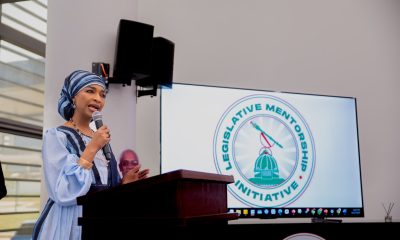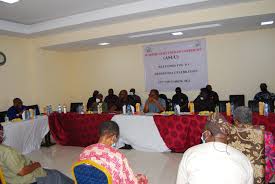Business
How data and content is powering marketing innovation in Africa
Published
7 years agoon
By
Olu Emmanuel
When I started out my career in the media industry twenty years ago, pan-regional data was scarce and based on many assumptions, but we used it the best we could to gain insight into our audience, their behaviour and response to programming and advertising campaigns. Fast forward to 2018 and we are in another world where an ever-growing range of data points help us to understand audience habits, what content they consume, how and where they do so, and how this fits into their lives. Take the smartphone for instance – Google’s 2017 Connected Consumer Survey found that smartphone penetration had grown to 60% across Africa, and we know that users on the continent are very sophisticated in using their phones to make online payments as well as staying connected and consuming news and other media on the move.
All the data created through this usage can be used to create insight that can inform all parts of media and marketing decision-making such as distribution strategies, real-time advertising campaign optimisation, and understanding audience behaviour. This all comes with the important caveat that data must be used responsibly in a way that respects the user, their privacy and experience.
African brands are very aware of this trend, and at CNN we are increasingly speaking to our clients on the continent about how data is now an integral part the solution we are delivering. Still, it is refreshing that however sophisticated our data strategy is, clients still share our passion for the content itself. In the rush for data, media brands and advertisers must guard against focusing too much on data and losing sight of the value of content. For maximum effect, a balance of the two elements is required. For instance, data can give a clear indication of what type of content will best work for certain audience demographics. Facial recognition and other technology can be used to test particular campaigns on audience focus groups to judge their responses to particular creative approaches. But, always there is an element of intangibility about why a particular creative approach to editorial and branded content and advertising elicits an emotional response. This intangibility lies in the minds of the brilliant content creators and has many other factors pertinent to the media or advertiser sending the message such as existing brand attributes and affiliation built up over time. The intersection between content and data differs greatly depending on the campaign, its objectives and platform approach. For a highly targeted digital campaign with a need to reach specific segments, data will play a dominant role in development, execution and delivery. Whereas, a big, bold TV-led brand-building campaign designed to raise awareness amongst various audience groups will have a greater focus on the creative over data. The two forces co-exist in both examples, but at varying levels.
My team at CNN work across over 100 countries spanning Europe, Middle East and Africa, adapting this data and content approach depending on the client’s needs and objectives. We are genuinely excited to be working with many valued advertising partners in Africa who are embarking on highly innovative campaigns and want to experiment and be bold in their marketing strategies. One good example is Dangote Industries – a long-term partner who this year became the first African brand to be part of Great Big Story, which was launched by CNN and Turner in 2015 to tell amazing stories that appeal to intellectual, curious and connected consumers. In addition, Dangote continued its brand building campaign on CNN TV and briefed our branded content studio to develop a new 360-degress campaign across multiple platforms. By taking this multi-platform approach, Dangote is leveraging the best of both the TV and digital ecosystems and drawing on tangible insight based upon the data of how CNN audiences consumed its content. Data can then be used to help inform Dangote’s own business and marketing decisions and give greater understanding of core audience groups. This most certainly isn’t an isolated example. Over 70% of the campaigns that we work on with international advertisers are multi-platform – some are predominantly TV, supported by digital, mobile and social, others are digital led but with a TV component.
We are continually impressed with how African brands are eager to be at the forefront of experimenting with new techniques being used in media and marketing. But please don’t confuse being ‘impressed’ with being ‘surprised’. In a continent that in large parts is leap-frogging other nations in technology adoption and understanding, my team at CNN is looking forward to collaborating with African brands for yet more fresh thinking and ‘media first’ ideation. The only certainty is that data and content will be the two factors that continue to power this innovation.
Cathy Ibal, Vice President, Advertising Sales, CNN International Commercial
Trending

 Business7 days ago
Business7 days agoGoogle announces N3bn investment to boost Nigeria’s AI talent, digital safety infrastructure

 Crime1 week ago
Crime1 week agoMan faces trial over N132m fraud allegation

 Business1 week ago
Business1 week agoMusawa calls for deeper art, culture integration in public-sector development

 Latest4 days ago
Latest4 days agoTinubu appoints Christopher Musa new Defence minister

 Latest5 days ago
Latest5 days agoObaseki counters Okpebholo’s remarks, vows to enter Benin when ready

 Politics1 week ago
Politics1 week agoCOAS congratulates 8 retiring generals on meritorious service

 Business5 days ago
Business5 days agoFG threatens tough sanctions on banks, financial firms aiding terrorism financing

 Education1 week ago
Education1 week agoASUU urges FG to implement Briggs committee agreement

